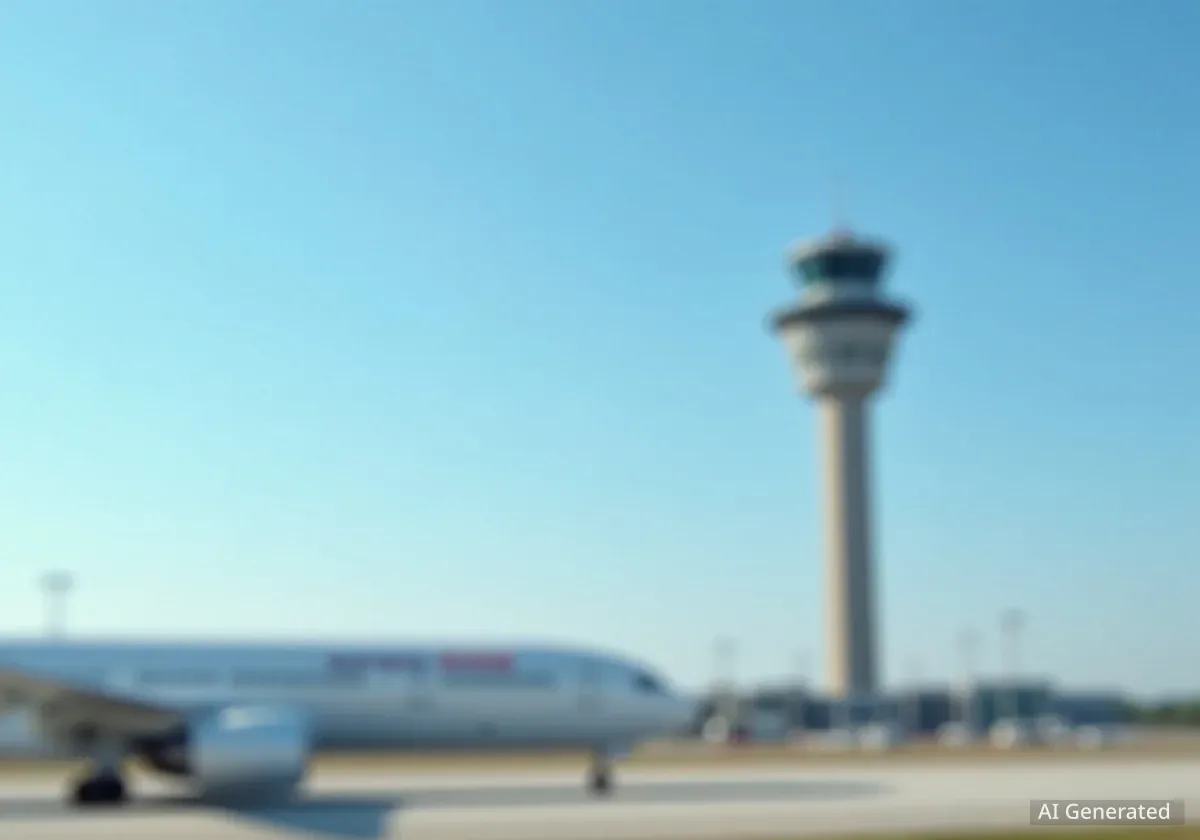A British Airways passenger traveling from London Heathrow to Rome Fiumicino recently shared an unexpected experience: the aircraft cabin was sprayed with insecticide before takeoff. Melissa Arana, the passenger, expressed strong disapproval online, stating she would not have boarded the flight had she known about the spraying. She described the chemical as 'toxic' and noted one crew member's apparent frustration with the routine task.
Key Takeaways
- Passenger Melissa Arana criticized British Airways for spraying insecticide in the cabin.
- The incident occurred on a flight from London Heathrow to Rome Fiumicino.
- Disinsection is a mandatory procedure on certain international routes to prevent disease spread.
- Italy implemented stricter rules in 2024 for flights potentially originating from dengue/Zika risk areas.
- Approved insecticides like Phenothrin or Permethrin are used and considered safe by the WHO.
Unexpected Spraying on Rome-Bound Flight
The incident took place on a British Airways flight destined for Rome Fiumicino Airport. Ms. Arana recounted the experience, stating that passengers were 'sprayed down' with a chemical insecticide without any prior warning. She described the act as 'disgusting' and voiced significant concern for individuals with respiratory conditions such as asthma.
Her online post highlighted a common issue: many passengers are unaware of disinsection practices until they are happening. This lack of explicit, upfront notification during the booking process can lead to distress and confusion.
Fact Check
British Airways' official website does detail which flights require disinsection, but this information is not always prominently displayed during the ticket purchase. The airline complies with international health regulations.
Understanding Aircraft Disinsection Regulations
Aircraft disinsection is a global health measure. Organizations like the World Health Organization (WHO) and the International Civil Aviation Organization (ICAO) recognize it. Its primary goal is to prevent the international spread of mosquito-borne diseases. These diseases include dengue, malaria, and Zika virus.
The practice dates back to the Chicago Convention of 1944. This convention granted health authorities the right to enforce pest control on international flights. Health agencies worldwide view this as a crucial step in controlling disease outbreaks.
"The insecticides used are typically synthetic pyrethroids like Phenothrin or Permethrin, both approved for in-cabin use under international aviation health regulations."
These approved insecticides are designed for safe use within aircraft cabins. They aim to quickly eliminate any potential disease vectors without posing significant risks to passengers or crew.
Why Flights to Italy Require Spraying
In 2024, Italian authorities implemented stricter regulations. These rules require airlines to spray aircraft that may have previously operated in regions at risk for dengue or Zika transmission. While the United Kingdom is not considered a risk region for these diseases, British Airways short-haul aircraft frequently rotate between various destinations.
Due to this operational model, British Airways cannot always confirm if a specific aircraft has recently flown to an affected region. To ensure full compliance with Italian health regulations, the airline sprays every aircraft bound for Italy. This precautionary measure, while necessary for regulatory adherence, has led to passenger complaints from those unaware of the procedure.
Context on Disinsection Methods
There are two main methods for disinsection: 'spray' and 'residual'. The spray method involves directly applying an insecticide in the cabin, often with passengers present. Residual disinsection involves coating cabin surfaces with a long-lasting insecticide. This method needs reapplication only once every eight weeks and avoids spraying around passengers. However, it is generally more cost-effective for airlines with frequent routes to countries like Australia or New Zealand, which have strict, ongoing disinsection requirements.
Global Perspectives on Aircraft Disinsection
More than 30 countries globally mandate some form of aircraft disinsection. However, not all health organizations fully endorse its effectiveness in preventing disease transmission. The Centers for Disease Control and Prevention (CDC) in the United States, for example, has stated there is no conclusive evidence that these sprays prevent disease spread.
The Environmental Protection Agency (EPA) in the U.S. even withdrew its approval for in-flight insecticides in 1996, citing potential health risks. Despite these domestic stances, U.S. airlines must still comply with foreign regulations when operating international flights to countries that enforce disinsection requirements.
- Over 30 countries enforce disinsection.
- U.S. CDC finds no conclusive evidence of prevention.
- U.S. EPA withdrew approval in 1996 due to health concerns.
Passenger Options and Airline Policies
Once cabin doors are closed and the disinsection process begins, passengers typically cannot opt out. Airlines generally advise individuals sensitive to chemicals to cover their nose and mouth during the spraying. The World Health Organization maintains that the approved insecticides are safe for use in the presence of passengers.
However, the debate continues within the aviation community. Some cabin crew members have expressed discomfort regarding repeated exposure to these insecticides. They have requested that airlines explore alternative compliance methods. Despite these concerns, a widespread shift to the residual disinsection method is unlikely in the short term, primarily due to cost and the complexities of international regulations.
Passengers flying to certain international destinations should be aware of these procedures. It is advisable to check airline policies or destination country requirements before travel, especially if sensitive to chemicals or concerned about airborne treatments.




